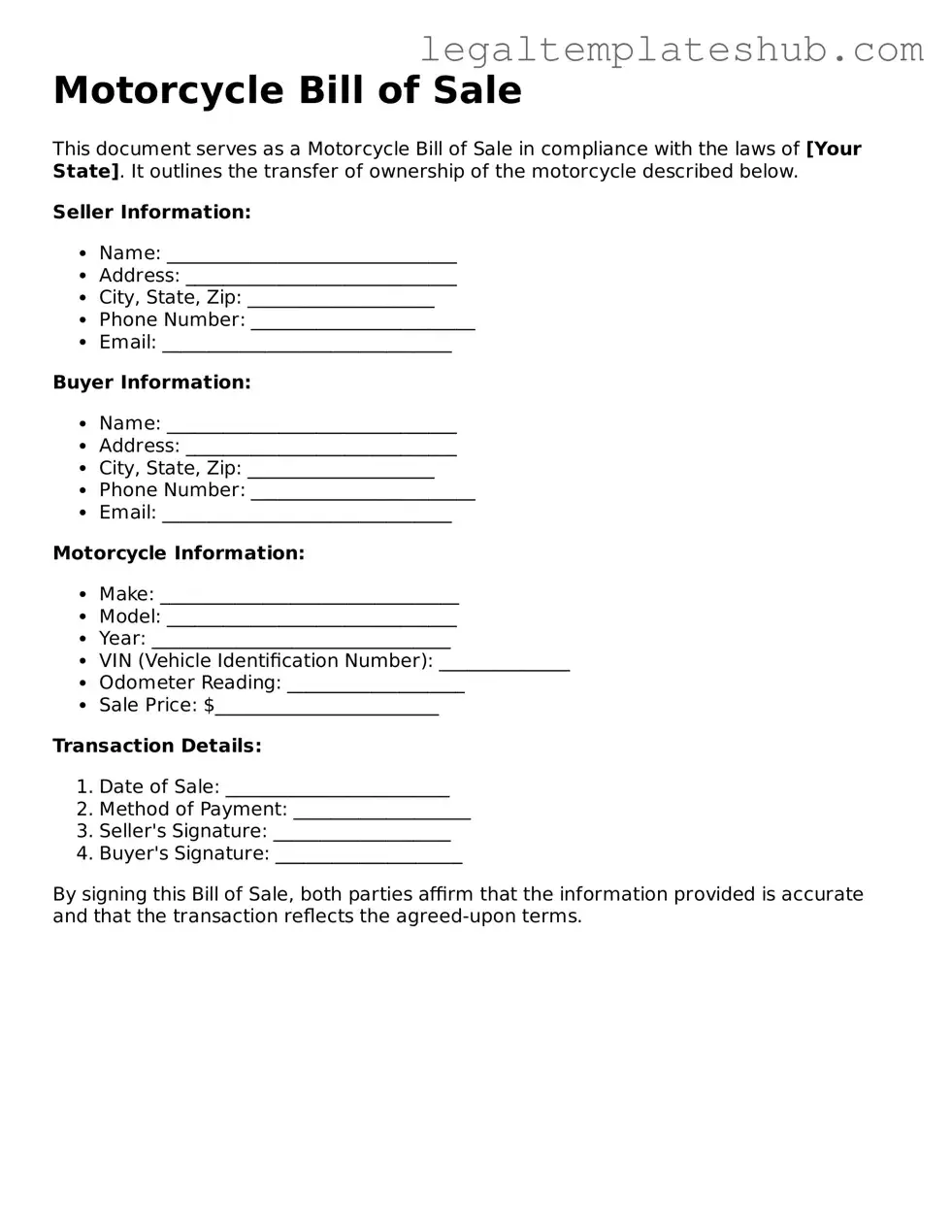Motorcycle Bill of Sale - Adapted for State
Instructions on Filling in Motorcycle Bill of Sale
Filling out the Motorcycle Bill of Sale form is an important step in completing the sale of a motorcycle. This document serves as proof of the transaction and includes essential information about the buyer, seller, and the motorcycle itself. Once you have the form ready, follow these steps to ensure all necessary details are accurately provided.
- Gather necessary information: Collect details about the motorcycle, including the make, model, year, VIN (Vehicle Identification Number), and odometer reading.
- Fill in seller information: Write the full name, address, and contact information of the seller. This is the person who is selling the motorcycle.
- Fill in buyer information: Enter the full name, address, and contact information of the buyer. This is the person who is purchasing the motorcycle.
- Specify the sale price: Clearly state the agreed-upon sale price of the motorcycle. Make sure this amount is accurate.
- Include the date of sale: Write the date when the transaction is taking place. This is important for record-keeping.
- Sign the document: Both the seller and the buyer should sign the form. This confirms that both parties agree to the terms of the sale.
- Make copies: After completing the form, make copies for both the seller and the buyer. This ensures that each party has a record of the transaction.
After filling out the Motorcycle Bill of Sale form, both parties should keep their copies for future reference. This document can be helpful for registration purposes or in case any disputes arise later on.
